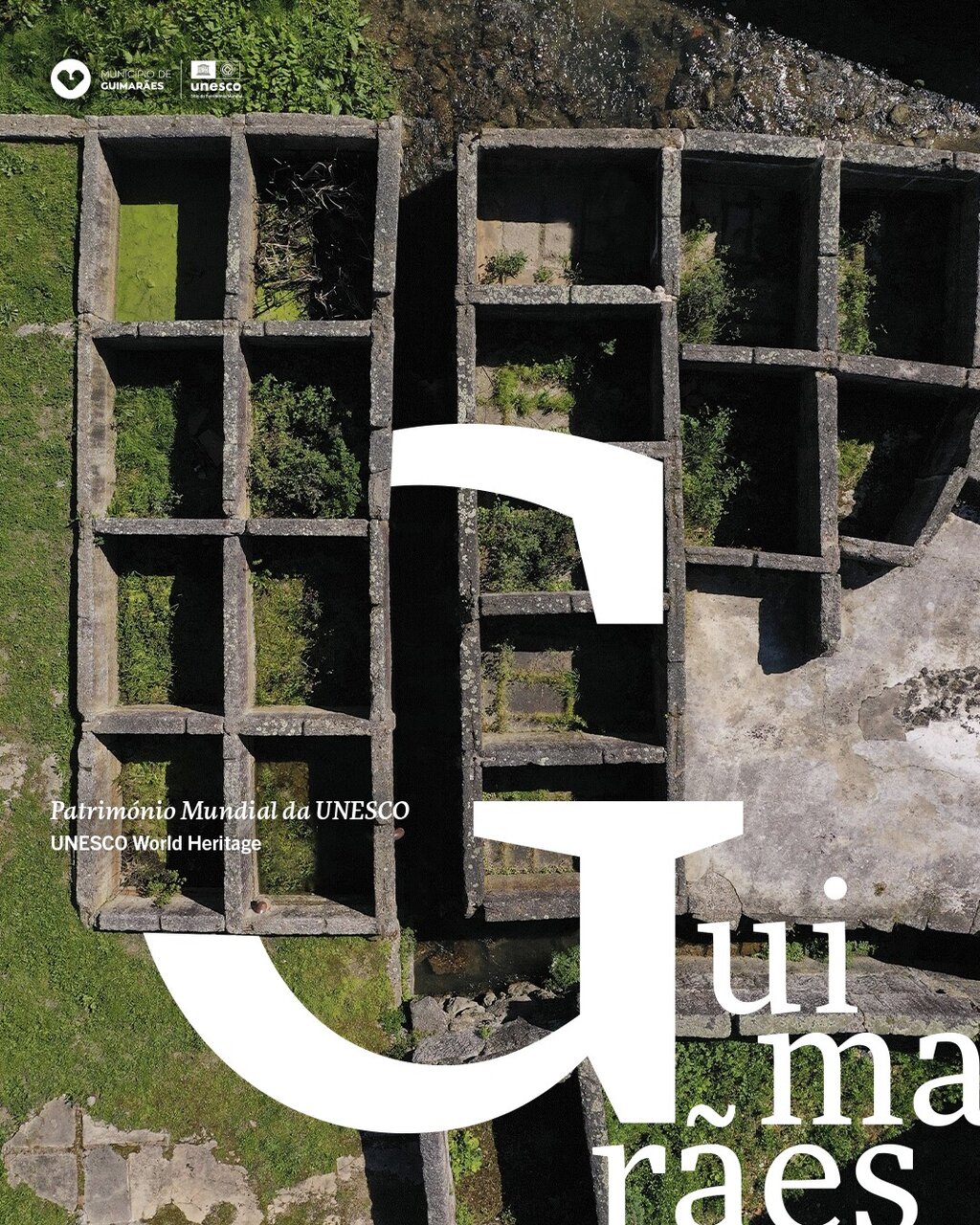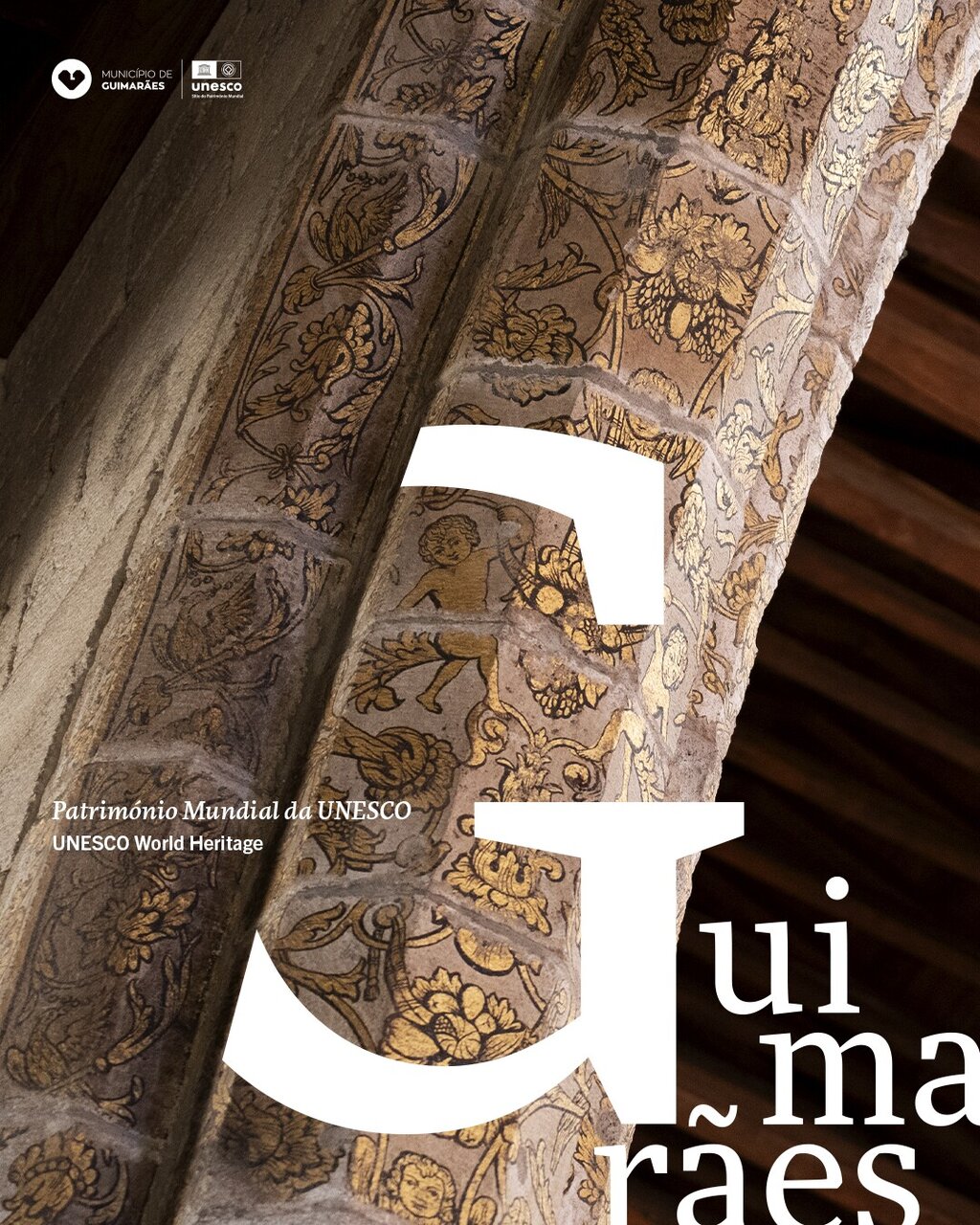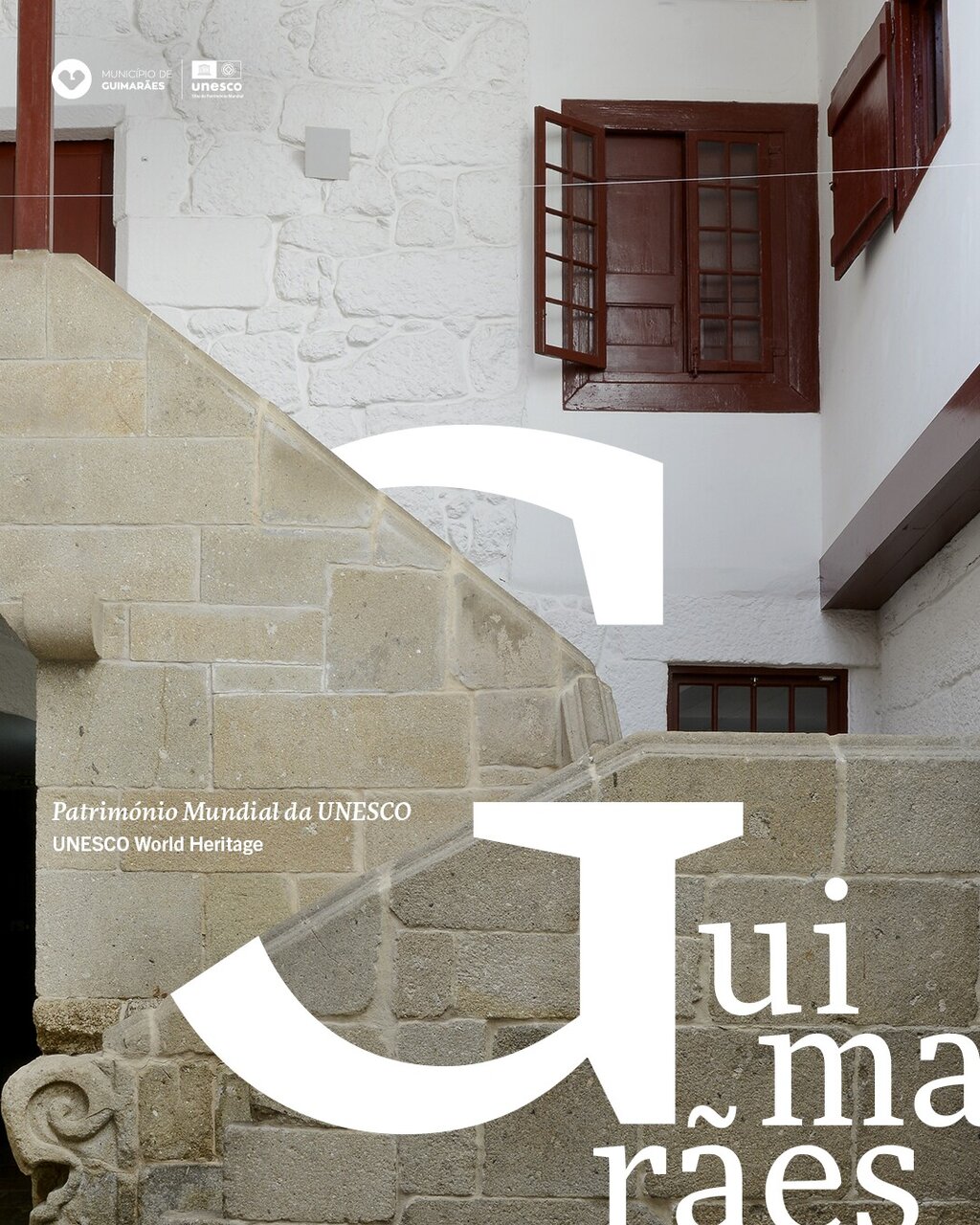Declaração de Valor Universal Excecional

Centro Histórico de Guimarães e Zona de Couros
Resumo
A histórica cidade de Guimarães está associada ao surgimento da identidade nacional portuguesa no século XII. Um exemplo excecionalmente bem preservado e autêntico da evolução de um assentamento medieval para uma cidade moderna. A sua rica tipologia edificatória exemplifica o desenvolvimento específico da arquitetura portuguesa entre os séculos XV e XIX, através do uso consistente de materiais e técnicas de construção tradicionais.
O Bem inclui dois complexos monásticos e uma área industrial, a Zona de Couros, que, tal como o rio local, recebeu o nome do tradicional ofício da curtimenta de peles. Embora esta atividade já não seja praticada, subsistem vestígios sob a forma de fábricas de curtumes, casas operárias e conjuntos urbanos dos séculos XIX e início do século XX. O Bem testemunha mil anos de evolução urbana, arquitetónica e social em Portugal.
Data de inscrição na Lista do Património Mundial 2021 / 2023
Critérios (ii) (iii) (iv)
Gestor Câmara Municipal de Guimarães
Declaração de Valor Universal Excecional
(Decisão 45 COM 8B.48, 2023)
Breve síntese
Fundado no século X d.C., o Centro Histórico de Guimarães tornou-se a primeira capital de Portugal no século XII. O seu centro histórico, incluindo a sua área extramuros conhecida como a Zona de Couros, é um exemplo excecionalmente bem preservado e autêntico da evolução de um assentamento medieval para uma cidade moderna. A sua rica tipologia edificatória exemplifica o desenvolvimento específico da arquitetura portuguesa entre os séculos XV e XIX, através do uso consistente de materiais e técnicas de construção tradicionais. Esta variedade de diferentes tipos de edifícios documenta as respostas a necessidades evolutivas da comunidade, tanto para fins residenciais como proto-industriais. Aqui desenvolveu-se um tipo particular de construção na Idade Média, com um piso térreo em granito e uma estrutura de madeira por cima. Esta técnica foi transmitida para as, então, colónias portuguesas na África e no Novo Mundo, tornando-se a sua característica distintiva.
O Centro Histórico de Guimarães e Zona de Couros distingue-se em particular pela integridade do seu património edificado historicamente autêntico. Exemplos do período de 950 a 1498 incluem os dois polos ao redor dos quais a vila intramuros de Guimarães se desenvolveu inicialmente: o castelo ao norte e o complexo monástico ao sul. A vila expandiu-se extramuros ao redor dos complexos monásticos franciscano e dominicano. O período de 1498 a 1693 é caracterizado pela construção de grandes casas, pelo desenvolvimento de equipamentos públicos e pela disposição das praças da cidade. Embora tenham ocorrido algumas mudanças durante a era moderna, o Centro Histórico de Guimarães e Zona de Couros mantiveram o seu traçado urbano medieval. A continuidade da técnica tradicional, a manutenção e as mudanças graduais contribuíram para uma paisagem urbana excecionalmente harmoniosa.
Critério (ii)
Guimarães, com a sua Zona de Couros proto-industrial, possui um significado universal considerável pelo facto de as técnicas especializadas de construção ali desenvolvidas na Idade Média terem sido transmitidas para as, então, colónias portuguesas na África e no Novo Mundo, tornando-se uma característica distintiva.
Critério (iii)
A história inicial de Guimarães está intimamente associada ao estabelecimento da identidade e da língua portuguesa no século XII. A Zona de Couros testemunha a riqueza que a independência trouxe a Guimarães e que possibilitou o seu desenvolvimento urbano e arquitetónico contínuo e harmonioso até o final do século XIX.
Critério (iv)
O Centro Histórico de Guimarães e Zona de Couros é uma cidade excecionalmente bem preservada que ilustra a evolução de tipos específicos de construção desde o assentamento medieval até a cidade atual, especialmente entre os séculos XV-XIX.
Integridade
Os limites do Centro Histórico de Guimarães e Zona de Couros englobam todos os elementos necessários para expressar o seu Valor Universal Excecional, incluindo um tipo particular de construção desenvolvido na Idade Média, utilizando granito combinado com uma estrutura de madeira, e um património edificado histórico bem preservado que representa a evolução das tipologias de construção desde a Idade Média até ao século XIX. Este desenvolvimento é documentado na rica variedade de diferentes tipos de edifícios que responderam a necessidades evolutivas da comunidade para fins residenciais e de produção. O Centro Histórico de Guimarães não sofre indevidamente os efeitos adversos do desenvolvimento e/ou negligencia, ao passo que a Zona de Couros precisa de uma estratégia urgente de conservação e reabilitação. As pressões de desenvolvimento e a gentrificação relacionadas as pressões do turismo podem, com o tempo, comprometer a integridade do Bem.
Autenticidade
O Centro Histórico de Guimarães e Zona de Couros é autêntico em termos de localização e enquadramento, formas e traçados, materiais e substâncias. Conseguiu preservar a sua estratigrafia histórica e integridade territorial. Diferentes fases de desenvolvimento estão bem integradas na configuração do Bem.
Requisitos de proteção e gestão
O Centro Histórico de Guimarães e Zona de Couros está sujeito a várias disposições legais relativas a proteção de edifícios históricos, incluindo a Lei n.º 107/01 de 8 de setembro, o Decreto-Lei n.º 115/12 de 25 de maio, o Decreto-Lei n.º 309/09 de 23 de outubro, e a disposições legais relativas ao planeamento urbano, incluindo o Decreto-Lei n.º 38382/51 de 7 de agosto, o Decreto-Lei n.º 555/99 de 16 de dezembro, e o Decreto-Lei n.º 307/09 de 23 de outubro. O seu plano diretor, que data de 1994, revisto em 2015*, inclui regulamentos para a proteção do centro histórico.
O Centro Histórico de Guimarães e Zona de Couros inclui dezanove edifícios históricos que são legalmente protegidos como Monumentos Nacionais (dez) ou como bens de Interesse Público (nove), de acordo com a Lei Portuguesa de Proteção de Monumentos Históricos. Além de algumas propriedades pertencentes ao Estado, a maior parte do património edificado é de propriedade privada. As áreas públicas do Centro Histórico são propriedade do Município de Guimarães.
A gestão do centro histórico é da responsabilidade da Divisão do Património Municipal e Bens Classificados do Município (DPMBC). Qualquer intervenção relacionada com edifícios classificados está sob a tutela da Direção Geral do Património Cultural (DGPC)**. Sustentar o Valor Universal Excecional do Bem ao longo do tempo exigirá a preparação, aprovação e implementação das normas e regulamentos necessários para o Bem ampliado e zona tampão, suportado nos atributos do Valor Universal Excecional. Uma abordagem de Avaliação de Impacto Patrimonial integrada no planeamento urbano e a estratégia de reabilitação da Zona de Couros são essenciais para salvaguardar os atributos do Valor Universal Excecional no ambiente urbano altamente dinâmico de Guimarães.
*Atualmente (2025) encontra-se no processo de 2.ª Revisão.
**Atualmente sob tutela do Património Cultural, I.P.
Publicação em Diário da República

[Versão inglesa | English version]
Historic Centre of Guimarães and Couros Zone
Summary
The historic town of Guimarães is associated with the emergence of the Portuguese national identity in the 12th century. An exceptionally well-preserved and authentic example of the evolution of a medieval settlement into a modern town, its rich building typology exemplifies the specific development of Portuguese architecture from the 15th to 19th century through the consistent use of traditional building materials and techniques.
The property includes two monastic complexes and an industrial area, the Couros Zone, which, like the local river, was named after the traditional craft of leather tanning. Evidence of the craft, though no longer practiced, persists in the form of tanneries, workers' houses and urban spaces from the 19th and early 20th centuries. The property bears witness to a thousand years of Portuguese urban, architectural and societal developments.
Date of inscription on the World Heritage List 2021 / 2023
Criteria (ii) (iii) (iv)
Management Municipality of Guimarães
Statement of Outstanding Universal Value
(Decision 45 COM 8B.48, 2023)
Brief synthesis
Founded in the 10th century CE, the Historic Centre of Guimarães became the first capital of Portugal in the 12th century. Its historic centre, including its extra muros area known as the Couros Zone, is an extremely well-preserved and authentic example of the evolution of a medieval settlement into a modern town, its rich building typology exemplifying the specific development of Portuguese architecture from the 15th to the 19th centuries through the consistent use of traditional building materials and techniques. This variety of different building types documents the responses to the evolving needs of the community, both for residential and proto-industrial purposes. There was developed a particular type of construction in the Middle Ages featuring a ground floor in granite with a half-timbered structure above. This technique was transmitted to Portuguese colonies in Africa and the New World, becoming their characteristic feature.
The Historic Centre of Guimarães and Couros Zone is distinguished in particular for the integrity of its historically authentic building stock. Examples from the period from 950 to 1498 include the two poles around which intra muros Guimarães initially developed; the castle in the north and the monastic complex in the south. The town expanded extra muros around the Franciscan and Dominican monastic complexes. The period from 1498 to 1693 is characterised by the building of grand houses, the development of civic facilities and the layout of city squares. While there have been some changes during the modern era, the Historic Centre of Guimarães and Couros Zone have maintained their medieval urban layout. The continuity in traditional technology, the maintenance and gradual change have contributed to an exceptionally harmonious townscape.
Criterion (ii)
Guimarães, with its proto-industrial Couros Zone, is of considerable universal significance due to the fact that specialized building techniques developed there in the Middle Ages were transmitted to Portuguese colonies in Africa and the New World, becoming a characteristic feature.
Criterion (iii)
The early history of Guimarães is closely associated with the establishment of Portuguese national identity and language in the 12th century. The Couros Zone bears witness to the wealth that independence brought to Guimarães and that made possible its continuous and harmonious urban and architectural development until the end of the 19th century.
Criterion (iv)
The Historic Centre of Guimarães and Couros Zone is an exceptionally well-preserved town that illustrates the evolution of particular building types from the medieval settlement to the present-day city, and particularly in the 15th–19th centuries.
Integrity
The boundaries of the Historic Centre of Guimarães and Couros Zone encompass all the elements necessary to express its Outstanding Universal Value, including a particular type of construction developed in the Middle Ages using granite combined with a timber-framed structure, and a well-preserved historic building stock that represents the evolution of building typologies from the Middle Ages to the 19th century. This development is documented in search the rich variety of different building types that have responded to the evolving needs of the community for residential and production purposes. The Historic Centre of Guimarães does not suffer unduly from adverse effects of development and/or neglect, whilst the Couros Zone needs an urgent conservation and rehabilitation strategy. Development pressures and gentrification related to tourism pressures may undermine, over time, the integrity of the property.
Authenticity
The Historic Centre of Guimarães and Couros Zone is authentic in terms of its location and setting, forms and designs, and materials and substances. It has succeeded in preserving its historic stratigraphy and territorial integrity. Different phases of development are well integrated into the layout of the property.
Protection and management requirements
The Historic Centre of Guimarães and Couros Zone is subject to several legal provisions regarding the protection of historic buildings, including Law No. 107/01 of 8 September, Decree-Law No. 115/12 of 25 May, and Decree-Law No. 309/09 of 23 October, and to legal provisions regarding town planning, including Decree-Law No. 38382/51 of 7 August, Decree-Law No. 555/99 of 16 December, and Decree-Law No. 307/09 of 23 October. Its master plan (PDM), which dates from 1994, revised in 2015*, includes regulations for the protection of the historic centre.
The Historic Centre of Guimarães and Couros Zone includes nineteen properties that are legally protected as National Monuments (ten) or as properties of Public Interest (nine), according to the Portuguese Law on the Protection of Historic Monuments. Apart from some State-owned properties, most of the building stock is privately owned. The public areas of the historic centre are the property of the Municipality of Guimarães.
Management of the historic centre is the responsibility of the Municipal Division for the World Heritage and Listed Properties (DPMBC). Any intervention related to listed buildings is under the control of the Directorate General for Cultural Heritage (DGPC). Sustaining the Outstanding Universal Value of the property over time will require preparing, approving, and implementing the required norms and regulations for the extended property and buffer zone based on the attributes of Outstanding Universal Value. A Heritage Impact Assessment approach integrated into urban planning and the rehabilitation strategy for the Couros Zone are essential for safeguarding the attributes of Outstanding Universal Value in the highly dynamic urban environment of Guimarães.
*The PDM is currently (2025) being revised and includes norms for the protection of the historic centre, buffer zone and wider setting.
** Currently is under the control of the Public Institute for Cultural Heritage — Património Cultural, I.P.



